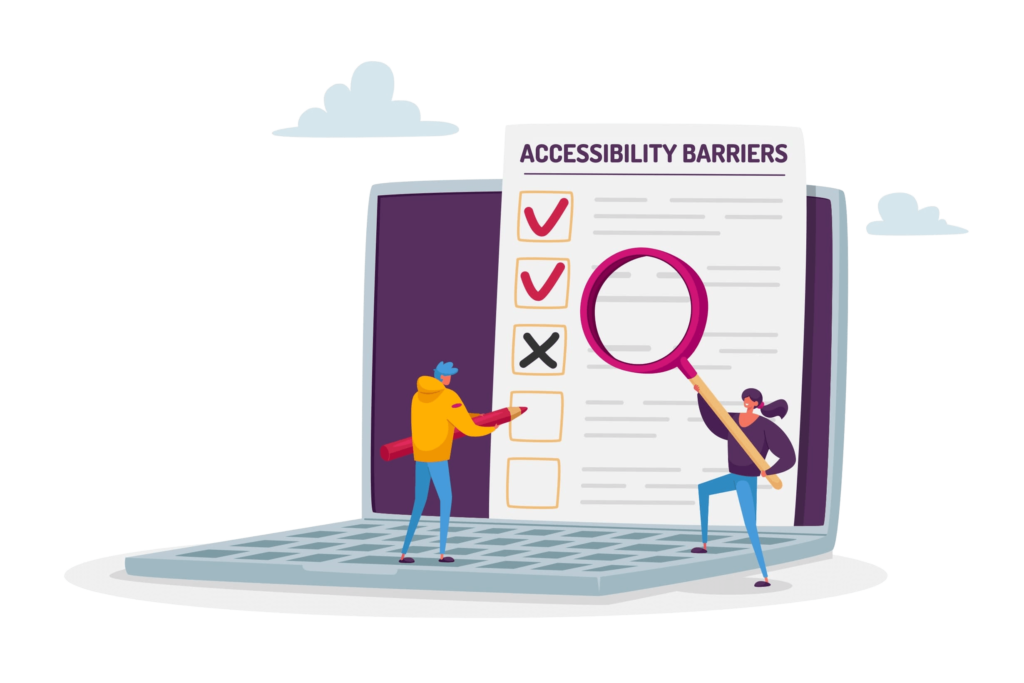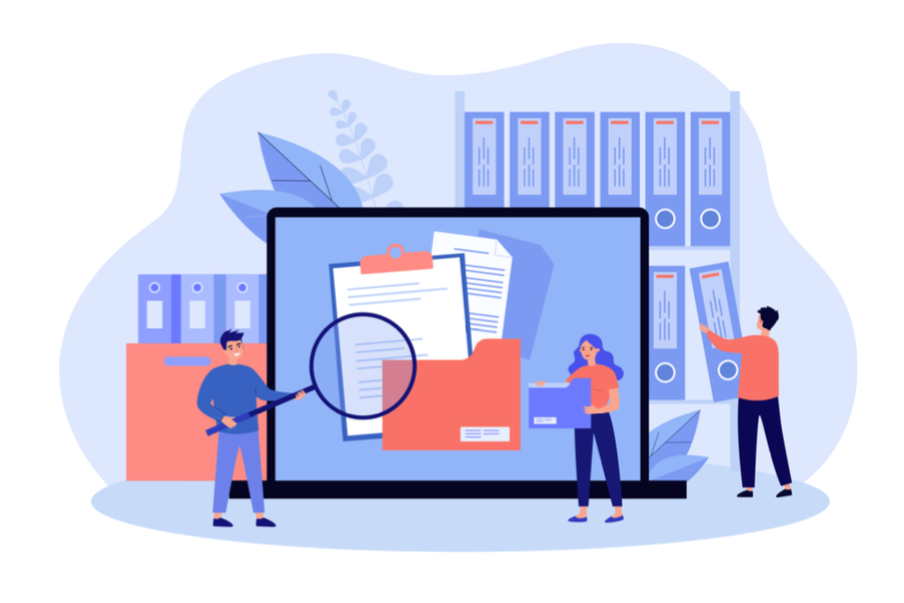
An accessible website is a basic need for non-profit organizations (NPO) and non-governmental organizations (NGOs). Although the American Disability Act (ADA) singles out government websites to accommodate all visitors regardless of their physical abilities, the table has turned with a recent explosion in ADA litigations. Consequently, an NGO and NPO website must be accessible to extend the social services to everyone in need.
Generally, non-governmental organizations are entities that are independent of government influence. The concept gained prevalence following the United Nations (UN) adoption of “non-governmental organization” or “NGO” to refer to international private agencies other than governmental ones. The intent was to create a distinction between participating rights for intergovernmental bodies and international private bodies. Virtually all private organizations became identified as NGOs by the UN as long as they are not controlled by the government or do not seek to take political power (as in political parties). In a more popular sense, NGOs readily seem as agencies focused on human rights and are not for profit.
Benefits of an accessible NGO or NPO website
The gains of operating an accessible website are not trivial. From improving search engine optimization (SEO) to giving visitors a memorable surfing experience, the stress that comes with the process always comes with reward(s). With a particular reference to non-governmental and non-profit initiatives, every foundation accrues loads of benefits from achieving ADA compliance.
First and foremost, an accessible NGO or NPO website supports inclusion. Our world has a longstanding history of discriminating against persons with disabilities. Daily, people face “disability discrimination,” which refers to a situation where people are treated less well or denied some benefits for reasons related to their disability.
Considering their missions, NGO and NPO websites should be even more predisposed to incorporating the standard accessible website requirements. More often than not, not-for-profits target the vulnerable population. For example, there are hundreds of organizations that support persons living with a disability. Foundations tending to the physically challenged, therefore, need to maintain accessible online platforms. Otherwise, that will be self-defeating negligence.
Furthermore, keeping an accessible website fosters trust between NGOs and the people whose interests they are out to protect. Of course, this trust also extends to donors of NGOs. Consequently, any agency sued for inaccessibility loses trust with beneficiaries and credibility with principal donors.
Disabilities that NGO and NPO websites should accommodate
Website accessibility means that people with disabilities can perceive, understand and navigate websites, mobile apps, and other digital tools. In a broader sense, it also means that people with disabilities cannot only consume data and information on the web but are also able to contribute to it.
Today, 15% of the human population has one form of disability or the other. To accommodate the needs of over one billion people, the W3C Web Accessibility Initiative (WAI) has put together the World Content Accessibility Guidelines. This reference document aims to guide web developers, content authors, UX designers, and QA testers to create websites that are barrier-free to all and sundry. According to this WCAG, there are five categories of disability that non-governmental organizations must keep in mind as they create their websites. These are:
- Physical
- Auditory
- Visual
- Cognitive
- Speech
People with disabilities use the web in various interesting ways. Someone with a visual disability, for example, may depend on a screen-reader or text-to-speech functionality to understand the content of a given web page. On the other hand, an individual with audio or auditory impairment would rely on transcripts or other non-text alternatives to make sense of multimedia content.
It is interesting to note that beyond these six categories of disabilities, there are temporary disabilities that could debar people from accessing digital content. Older people with changing abilities fall under this category and may experience digital exclusion. The same is true for someone who lost their glasses or broke their arm.
Quick accessibility tips for NGO & NPO websites
You probably know by now that accessibility non-compliance is a hot button that is getting pressed now and then. Demand letters have become the joy of plaintiffs and attorneys. To avoid ADA litigation, your NGO website should be usable for all kinds of visitors. First things first, a good way to start your compliance journey is to check a few non-technical things on your site.
Ensure the site is visually accessible
Visual disability is one of the most prevalent types of physical disability. Blind people seem to always be at the receiving end of inaccessible digital resources. Consequently, there are many federal court cases involving blind people. For this reason, it is crucial to begin your compliance journey with accessibility guidelines for the visually impaired. As we proceed, put it at the back of your mind that this is an accessibility first aid and not a curative step.
Use readable font
The type of font and its size affect an individual’s perception of visual impairment. While some people are blind, others have a slight visual challenge. For people with low vision, using bold, readable fonts could enhance perception. On the other hand, small and faint texts can create difficulty. NGO websites can apply san serif fonts, Open Sans, Verdana, etc., for their content to enhance readability.
Arrange content in an orderly manner
While it appears that most accessibility hurdles result from improper design, respondents in a survey raised concern about written content. None of the top five accessibility barriers is related to technical designs. Breaking texts into sections and headings enhances content readability. Same as using plain English. It is bad practice to write headlines in the upper case. Also, it is unethical to jam-pack information in long paragraphs.
Use moderate contrast
Poor color contrast affects people with low vision. It may cause a significant barrier even if the font is right and bold. The World Content Accessibility Guidelines 2.1 stipulate that websites should have at least a 4.5:1 contrast ratio.
Insert alt text for non-text content
Images are of immense value to NGOs. Non-profit and non-governmental organizations use images to document and publicize their projects. They also use them to convey any message to anyone regardless of their literacy level. In short, NGOs cannot do without photos. Against this background, you should make it a duty to label all images with brief descriptions (also known as alternative text) to be readable by a screen reader.
Check if the site supports tab navigation
People with motor disabilities may not find it convenient to interact with the web using a mouse. Instead, they rely on Tab and Shift keys to execute the command. A site that is not navigable by tab becomes a challenge to people in this category. Consequently, they are denied access to whatever information is meant for the public. It is relatively easy to determine whether your site is tab navigable or not. Try to interact with your organization’s website without a mouse and see how far you can go.
Provide alternatives for multimedia content
Individuals with auditory disability or hearing impairment demonstrate a need for alternatives to multimedia content. Just as alt texts are provided to help blind people make sense of non-text content, audio and video content should be accompanied by transcripts or captions for the hearing impaired. Furthermore, it is advised that multimedia content (audios and videos) and multimedia players come with audio control. This is important for people with auditory impairment so that they can mute or reduce interruptive noise.
What are the best accessibility services for NGO & NPO websites?
There is a pool of accessibility services for NGOs and NPOs to consider. Each brand has its unique offering and pricing strategy. What one should bear in mind before settling for an option is their accessibility needs, the type of service they desire, and the budget they have dedicated to such a purpose.
Regarding accessibility needs, it is important to determine whether your foundation needs a one-time audit and remediation or time-to-time evaluation and ongoing monitoring and maintenance. Service type refers to whether an organization is sufficient with automated audit and remediation or manual or a blend of both extremes. Certainly, every decision comes with a price. Therefore organizations should have a budget at hand before shopping for a compliance service. Here is a list of the best website accessibility services in 2021 that are perfect for non-governmental agencies.
Conclusion
ADA litigation is not decreasing. Rather, the statistics keep appreciating by the year. From retail agencies to food services and then to hotels, accessibility lawsuits continue to intrude every sector. Although businesses have previously received the hard wave of lawsuits, the tide is shifting to the non-profit sector. A NGO and NPO website must be accessible to accommodate as many people as possible. Also, NGO websites should maintain ADA compliance to avoid litigation. If nothing else, it speaks ill of agencies fighting for human rights to be the ones fuelling discrimination.












